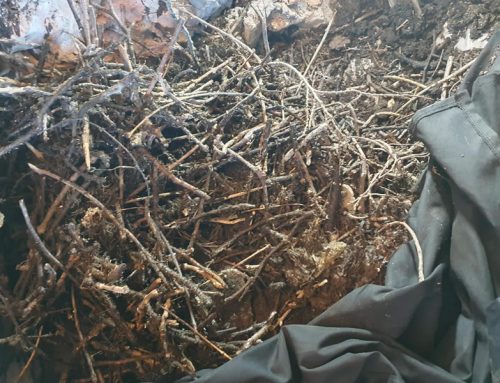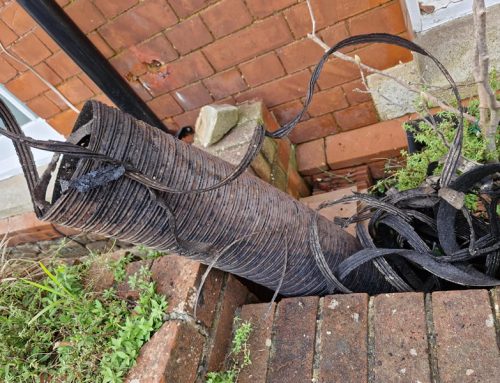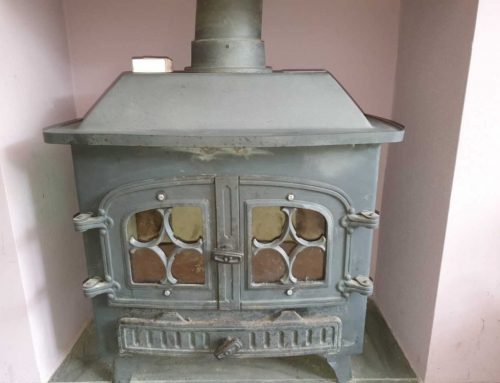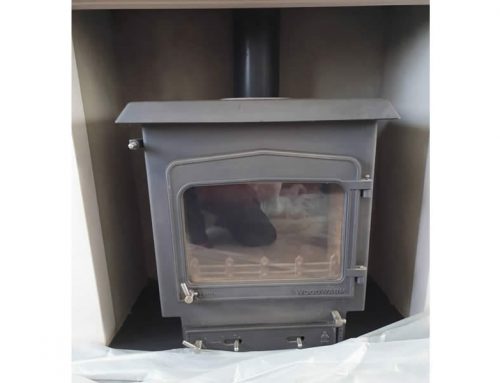Regular chimney sweeping
Having your stove swept on a regular basis by an experienced chimney sweep can prevent a build up of soot, which can damage your liner, this will ensure the efficient operation of your stove.Without regular maintenance a build up of creosote will coat your liner and prevent gases from exiting your chimney. I have been to sweeps where I cannot get my brush and rods up the chimney due to either complete blockage or collapse of the liner.
Rope Seals
One of the checks a chimney sweep will carry out is the stoves seals. It is important for your stove to be airtight, otherwise excess air can enter the chamber causing difficulty in controlling your fire.
Clearing out the ash pan
Clearing out your ash pan on a regular basis is an important part of maintenance. The ash in the pan constantly warm up and cool down if not emptied. I have seen many grates warped or broken due to it not being emptied on a regular basis. A clean ash pan will also ensure proper airflow.
An important note, make sure ash is completely cool when disposing of it, it can take around 24 hours for it too cool down and stop embering. Never leave ash in a container next to your fire. The ash in these containers can warm up and release carbon monoxide.
Keeping your glass clean
Regular cleaning of the glass allows you to check for any cracks that may occur. It also allows you to enjoy your fire. I attend many sweeps where the glass is black. Dampening some news paper and dipping it in the ash is one way of cleaning a light layer of build up. There are cleaners on the market for more heavy accumulation. Do not be tempted to use an abrasive sponge on the glass. It will damage the glass!
Fire Bricks
Fire bricks over time do deteriorate. The back fire bricks tend to be damaged if logs are thrown into the fire rather placed. You can either purchase them online or your Chimney sweep can replace them. I carry vermiculite sheets (what fire bricks are made from) with me and can cut new ones should they need to be replaced.
Ventilation
A fire needs the correct ventilation to burn, many of the houses built after 2008 have inadequate ventilation. When a new stove is installed in one of these properties an air vent will need to be installed.
Make sure that vents in your house are not blocked to ensure your fire burns efficiently.
Exterior cleaning
Wipe down your stove with a soft brush, a lint free cloth or a vacuum with a brush attachment. Do not wipe down with water as this can cause rust.
Using the correct fuel
Use fuel with ‘ready to burn’ logo on or from a reputable company. Smokeless coal burns produces less pollution than house coal. House coal is now banned from being sold in the UK. Wood should be less than 20% moisture to ensure complete combustion.
Do not ember stove
Allowing your stove to ember overnight can cause major issues in your liner. A flue needs to be hot for the gases to rise out of the chimney. As the fuel starts to cool so does the flue, cold air then presses down, and prevents the gases from escaping out of the chimney, instead they swirl around inside your liner coating it, over time creosote will build up, this can lead to the deterioration of your liner.
Not going to be using your stove for a long time?
Leave the door ajar to allow ventilation and prevent the buildup of rust.




